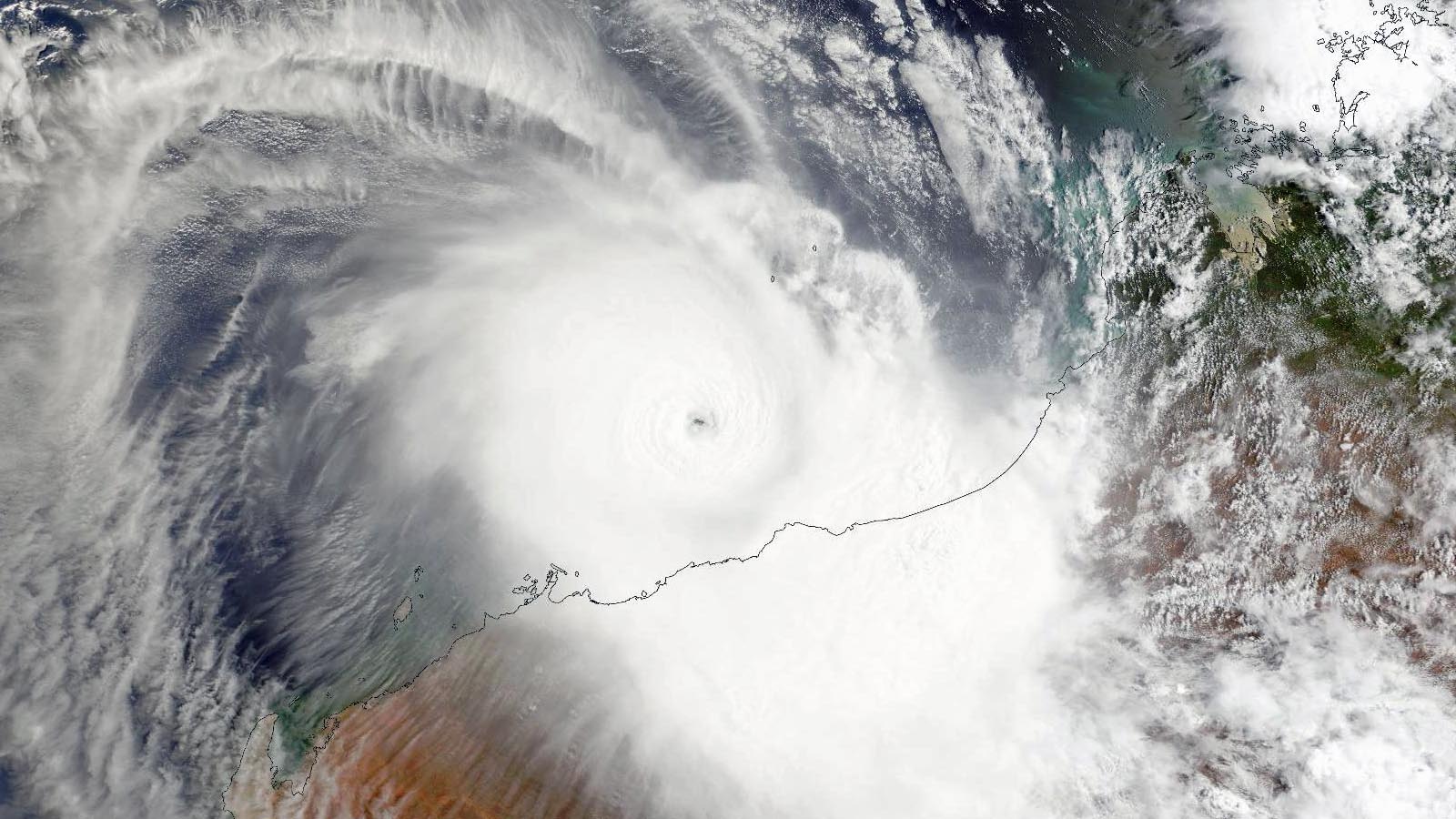
Tropical cyclone Zelia made its powerful entry into Western Australia, striking land approximately 30 miles east of Port Hedland at 11:30 p.m. EST on Thursday, February 13, translating to 12:30 p.m. local time on February 14. Upon landfall, the Joint Typhoon Warning Center classified Zelia as a Category 4 system, boasting wind speeds of 130 mph (209 km/h). Port Hedland recorded a maximum wind gust of 75 mph, while Zelia unleashed an impressive 17.16 inches (44 cm) of rain over a two-day span at Pardoo Station. Fortunately, the storm’s eyewall bypassed Port Hedland (population 15,000), minimizing its impact on heavily populated regions. Zelia stands as the first significant tropical cyclone to hit land in 2025.
Tropical Cyclone #Zelia has intensified rapidly over two and a half days, stalling and undergoing eyewall replacement cycles before reaching land near the mouth of the De Grey River in Western Australia. #CycloneZelia pic.twitter.com/HxqOYEdDCS
— YouStorm (@YouStormorg) February 14, 2025
A Significant Category 4 Landfall for Australia
Since 1961, Australia’s mainland has been struck by 18 tropical storms rated at Category 4 or 5 according to the Saffir-Simpson Wind Scale. The most potent cyclone recorded to hit mainland Australia was Cyclone Ilsa in April 2023, making landfall in a less populated region about 50 miles east of Port Hedland as a Category 4, with wind speeds reaching 155 mph (250 km/h) and a central pressure of 924 mb.
In the NOAA database, only three Category 5 storms have come within a 50-mile radius of Australia, none of which struck the mainland at that intensity. However, Cyclone Monica reached Marchinbar Island, off the northeast coast, as a Category 5 with winds of 180 mph on April 23, 2006.
A cyclone captured in the vast desert Outback. #Zelia pic.twitter.com/KOpPAxPuF8
— Backpirch Weather (@BackpirchCrew) February 14, 2025
Australia’s Cyclone Season Progressing Normally
Zelia is noted as the fifth named storm in the Australian region for the 2024/2025 cyclone season, aligning closely with average expectations. It marks the first landfalling system of the season, which is considered late. As per Colorado State University’s ongoing analysis of tropical cyclone activity, the Southern Hemisphere is experiencing a near-normal to slightly above-average cyclone season, contingent on the metric utilized. So far, in 2024/2025, there have been 16 named storms, seven hurricanes, six of which were classified as major hurricanes, and an accumulated cyclone energy (ACE) index of 141. In comparison, the 1991-2020 averages indicate 14 named storms, seven hurricanes, four major hurricanes, and an ACE index of 105.


Record-Warm Ocean Temperatures Contributed to Zelia’s Intensification
Zelia exhibited rapid intensification as it neared the Australian coast, rising to a peak as a Category 4 cyclone, with wind speeds reaching 150 mph (241 km/h) before it stalled. This stalling allowed cooler waters to mix upward, causing the storm’s winds to drop to 130 mph (209 km/h) upon landfall. During the phase of Zelia’s rapid intensification, record-warm ocean temperatures were observed: reaching about 31 degrees Celsius (88°F), approximately 1 to 2 degrees Celsius (1.8-3.6°F) warmer than the average. Such anomalous warmth was made ten times more probable by climate change, according to Climate Central’s Climate Shift Index: Ocean CSI. The additional heat significantly increased the likelihood of Zelia’s rapid intensification. Detailed explanations regarding the Climate Shift Index were outlined in a 2024 publication in the journal Environmental Research: “Attributing daily ocean temperatures to anthropogenic climate change.”


Declining Tropical Cyclone Frequency Near Australia in Recent Years
While the strength of the most intense tropical cyclones worldwide has been on the rise, the overall occurrence of these storms has diminished in recent decades within the Southern Hemisphere, particularly surrounding Australia. A 2022 study by Hiroyuki Murakami (Fig. 2) attributes this trend to the increase in dry, descending air in the Southern Hemisphere, primarily resulting from large-scale atmospheric circulation shifts triggered by a reduction in aerosol particles due to tighter air quality regulations implemented in the U.S. and Europe.









